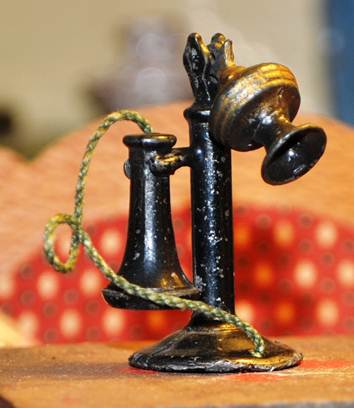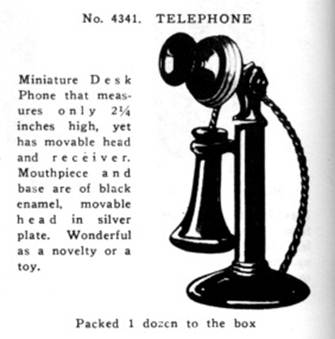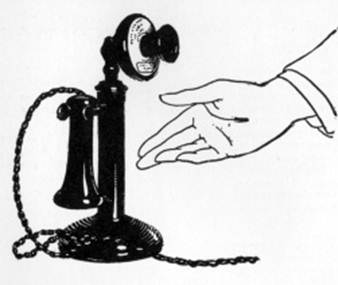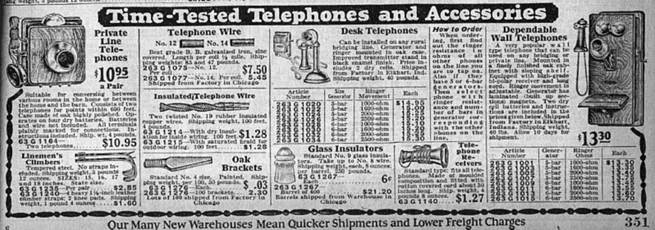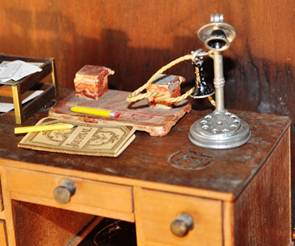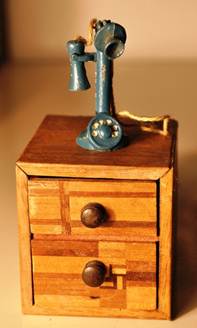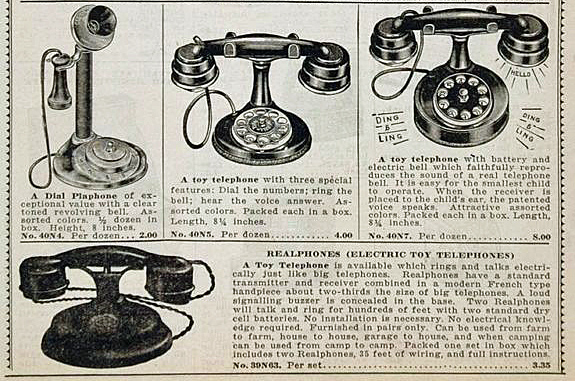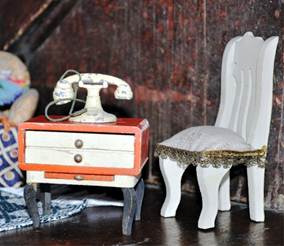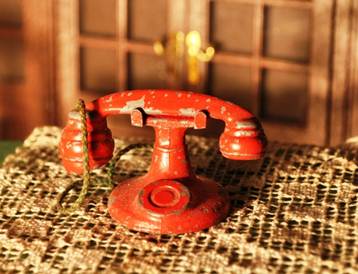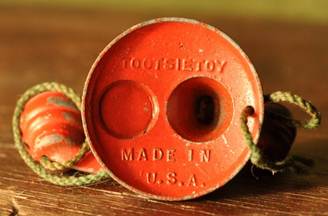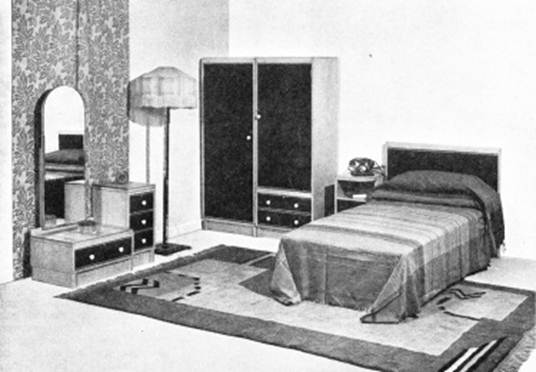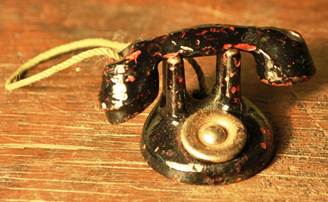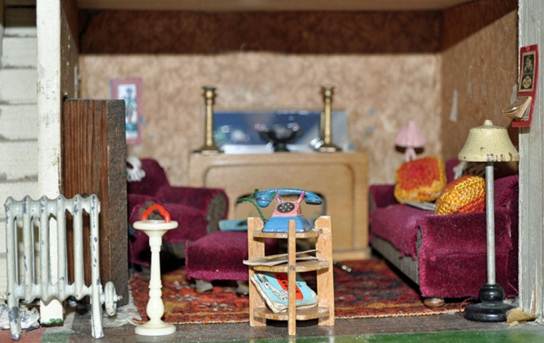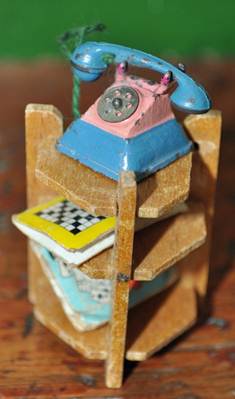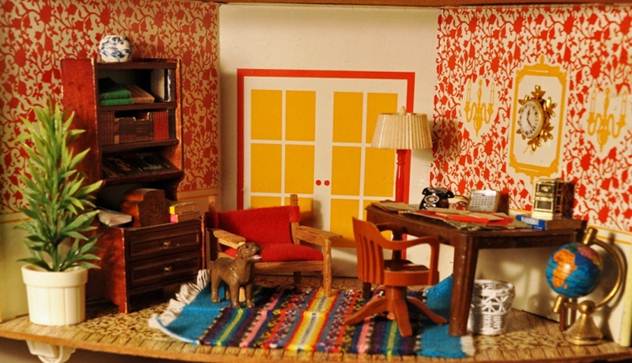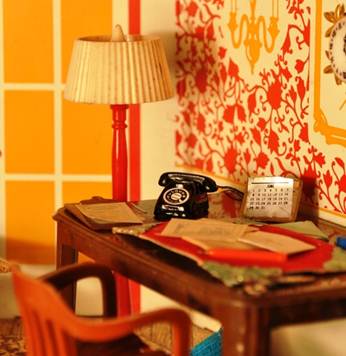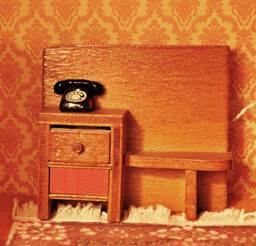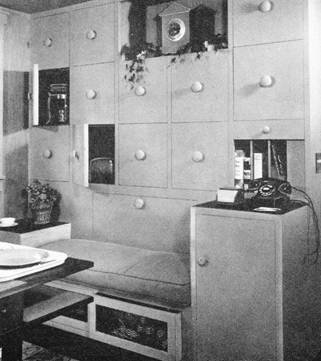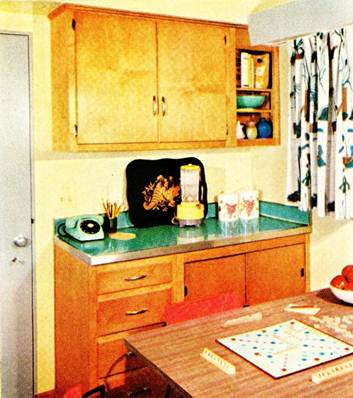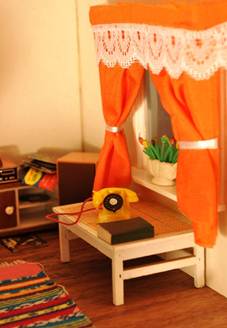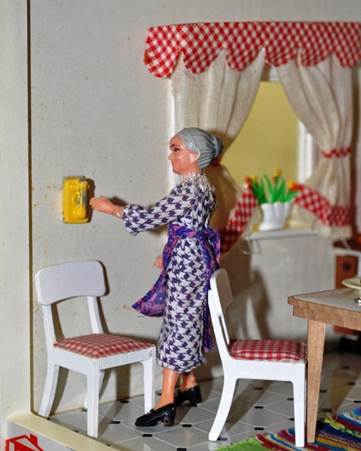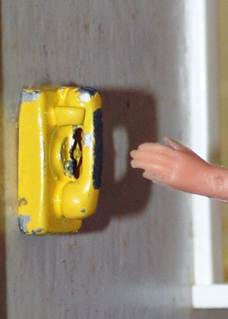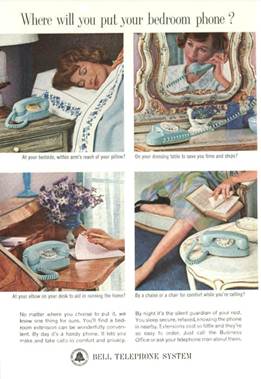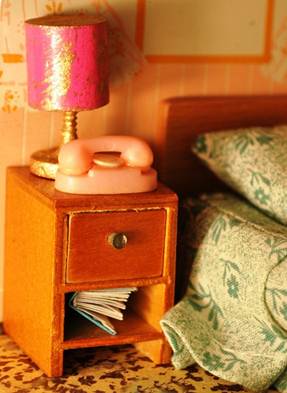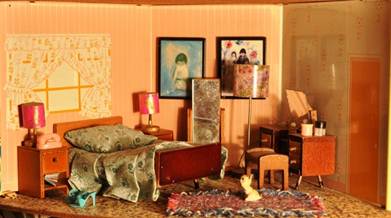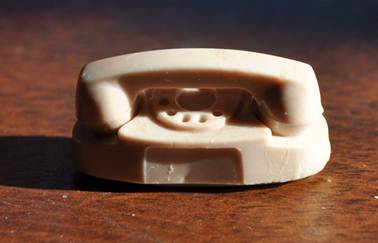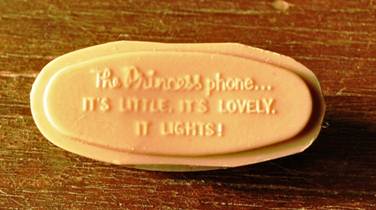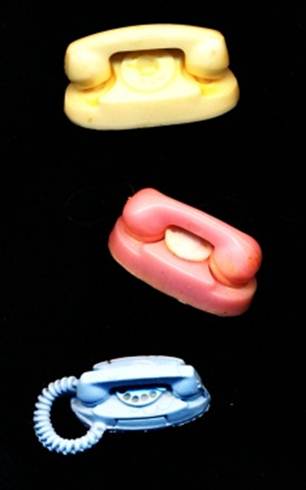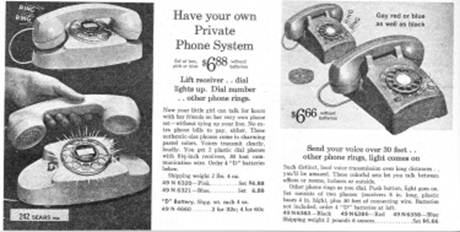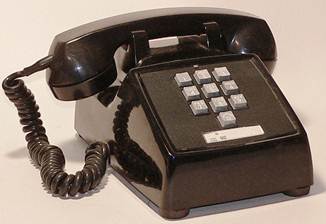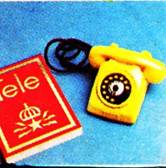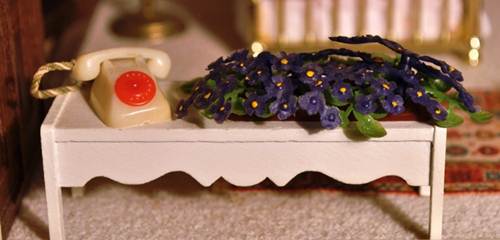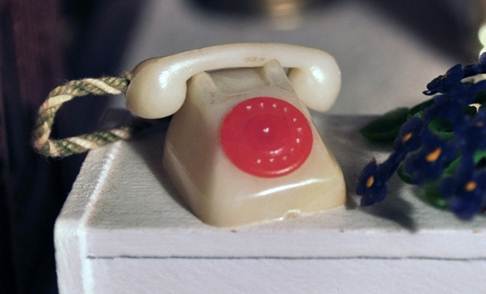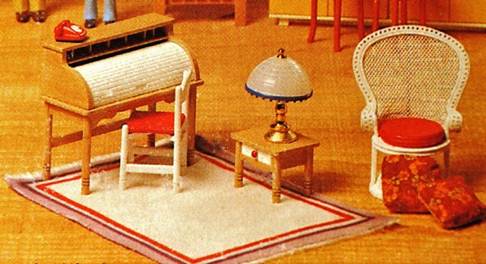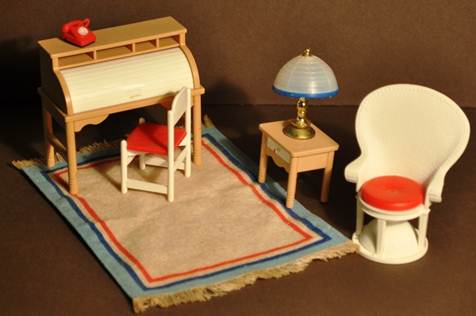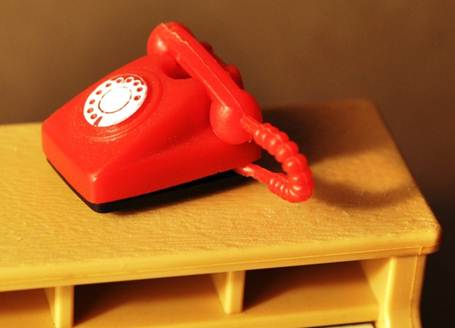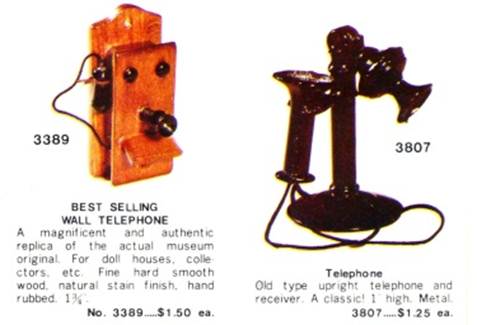Content-Language"
content="en-us">
|
examples of phones from the 1880s to the 1980s by Jennifer McKendry home page photography by Jennifer McKendry©
1906 Youth’s Companion, a real wall phone in use since 1882 Note:
real phones and children’s toy phones are illustrated, as they can help date
dollhouse phones. Alexander
Graham Bell patented the telephone in 1876 in the United States and, by 1880,
there were over 60,000 telephones in the US – all of which needed the
services on an operator. Even though Bell made a call between Brantford and
Paris, Ontario, Canada, in 1876, it was not until 1915 that there was a
practical system of long distance calling. By 1904, there were three million
phones in the US connected manually with a switchboard.
1891 Real magneto wall phone, oak casing, dependent
upon an operator connecting the caller and recipient by name (rather than by
number)
Dollhouse
wall phone made of wood with metal attachments, 4½ inches high, shown in
early 20th century catalogues of the German firm, Erhard &
Söhne, which also produced a phone with double bells. Although these toys are
often characterized as large scale, the actual phones – as can be seen in the
1891 stereocard above – were indeed large. Such a phone might have been found
in homes from 1882 to about 1920 in areas with access to operators. N.B. For readers interested in the Erhard &
Söhne firm, see Swantje Köhler, Ormolu
Dollhouse Accessories (2007).
“I want to phone my Baby”
The
advertisement is from 1905 in the Wiemann & Muench, Milwaukee, Wisconsin,
catalogue. Also an “I want to phone my Baby” model, it has discarded the pair
of transmitter-receivers.
Wall
phone in a large scale as a child’s toy in the 1905 John Wanamaker catalogue,
US.
Wooden dollhouse wall phone representing an early
type but the date of manufacture uncertain.
Wooden wall phone,
marked “Made in Germany”, c1882 – c1920, about 2½ inches high
Wooden wall phone,
11 inches for a child’s toy, in the 1914 Marshall Fields catalogue, US
1924-6 Universal Spielwaren Katalog, Germany
– probably large enough for a child’s toy. This style of phone is becoming obsolete,
as rotary dials are now in use.
Table phones: above,
a real phone of 1896 made in Sweden. One of the innovations of this type was
a convenient, combined transmitter-receiver in one handle.
A child’s toy phone
in 1924-6 Universal Spielwaren Katalog,
by which time this model was becoming obsolete.
Dollhouse’s table
phone, painted metal, body just over 1 inch long, missing one crank, early 20th
century
Telephone box for a doll’s
shop in 1924-6 Universal Spielwaren
Katalog, Germany
1906 stereocard showing a desk stand, sometimes
called a “candlestick” phone, in use since 1897 and remaining popular until
about 1930. About 1920, a dial was added liberating the phone from its
dependance on operators.
Desk stand, 1½
inches high, with two colours (generally speaking, the all-black ones are
slightly later), the mouthpiece swivels, early 20th century
Above 1925 Tootsietoy, 2¼ inches high
Above 1926 Good
Housekeeping (a real phone)
1927 Montgomery Ward
catalogue (real phones) – “Time-tested” and yet the illustrated models were
on their way out as dial phones became available
Dollhouse desk stand phones with dials, which
became practical to use for the general population about 1919; the old system
of asking the operator by the name of the person to whom you wished to speak
was replaced by telephone numbers. In Europe, the numbers on the dial were
not accompanied by letters of the alphabet, as they were in North America.
One contemporary advertisement described the new way as “unmeasured,
unlimited, and secret service.” The above phone is well manufactured and
marked “Made in Germany” and measures just under 2 inches high. The one below
is more crudely cast.
1934 ad for toy
phones with dials
1930s Dial telephones by “Tootsietoy Made in
U.S.A.”, one end of the receiver-transmitter is larger and replaces in 1928
(in the US) the older system of separate transmitters and receivers;
nicknamed “the French phone” because of its appearance; painted metal; 1 inch
high
1937 Dial phone in a
real bedroom, Homes and Gardens
(London). Toy maker F.W. Gerlach of Naumberg was making miniatures of this
type in the late 1930s.
Cast-iron dollhouse
dial phone marked 13 on base, 1½ inches high, 1930s
Dollhouse phone painted pink and blue with a
rotating metal dial, base five-eights of an inch square, 1930s.
Once established as an improved
transmitter-receiver, the black desk set ruled from the late 1930s into the
1950s. Dollhouse metal versions are still easily available to purchase as
vintage or brand new items. Base ½ inch long Telephone stands
become popular.
right Colour phones become widespread after 1954, as seen in
this 1954 Ladies Home Journal. This
suits the toy manufacturers who are now using coloured plastics (below). The
receiver-transmitter, body and dial are often in contrasting colours.
The dial wall phone becomes popular in 1956 in
kitchens and basements. This dollhouse example (maker unknown) is painted
metal.
In 1959, the Princess Phone made its debut and
was particularly touted as a bedroom phone, because the dial area lit up when
you lifted the transmitter-receiver. It was available in white, beige, pink,
blue and torquoise. The compact arrangment was seen as a space saver. In the
1960s, there was an increasing trend to have more than one phone per house.
The Princess made the transition to push buttons in 1963 and was discontinued
in 1994.
The advertising
gimmick was “The Princess phone… It’s little. It’s lovely. It lights!” Above Giveway from 1959, beige plastic 1¼ inches long. The three below
range from ¾ to 1 inch long. The blue metal one is more realistic with a
spiral cord.
In this Sears ad of
1964 for children’s toy phones, the two most popular types – the Princess and
desk phones – are shown.
Push-button touch-tone phones made an
appearance in 1964 but were slow to infiltrate dollhouses, even though they
became widespread in real life from the 1970s to today. The earliest ones had
only 10 buttons, soon augmented by another two.
Lundby dollhouses still used dial phones: this
yellow plastic example with a black dial is from the 1978 catalogue. In the 1974 catalogue (below), a white one with
a red dial and two-colour cord is shown.
detail from the Tomy
box holding the bar set
Tomy’s furnishings from the 1980s included a
small red plastic phone with a white dial and black base marked “Japan”. The
base is only ½ inch long.
Strangely, this survey from the 1880s to the
1980s is ending with a return to the early types, because they were
reproduced in the 1970s by Shackman and distributed by Federal Smallwares of
New York. GALLERY of IMAGES of dollhouses & furnishings references on dollhouses & miniatures
|




















